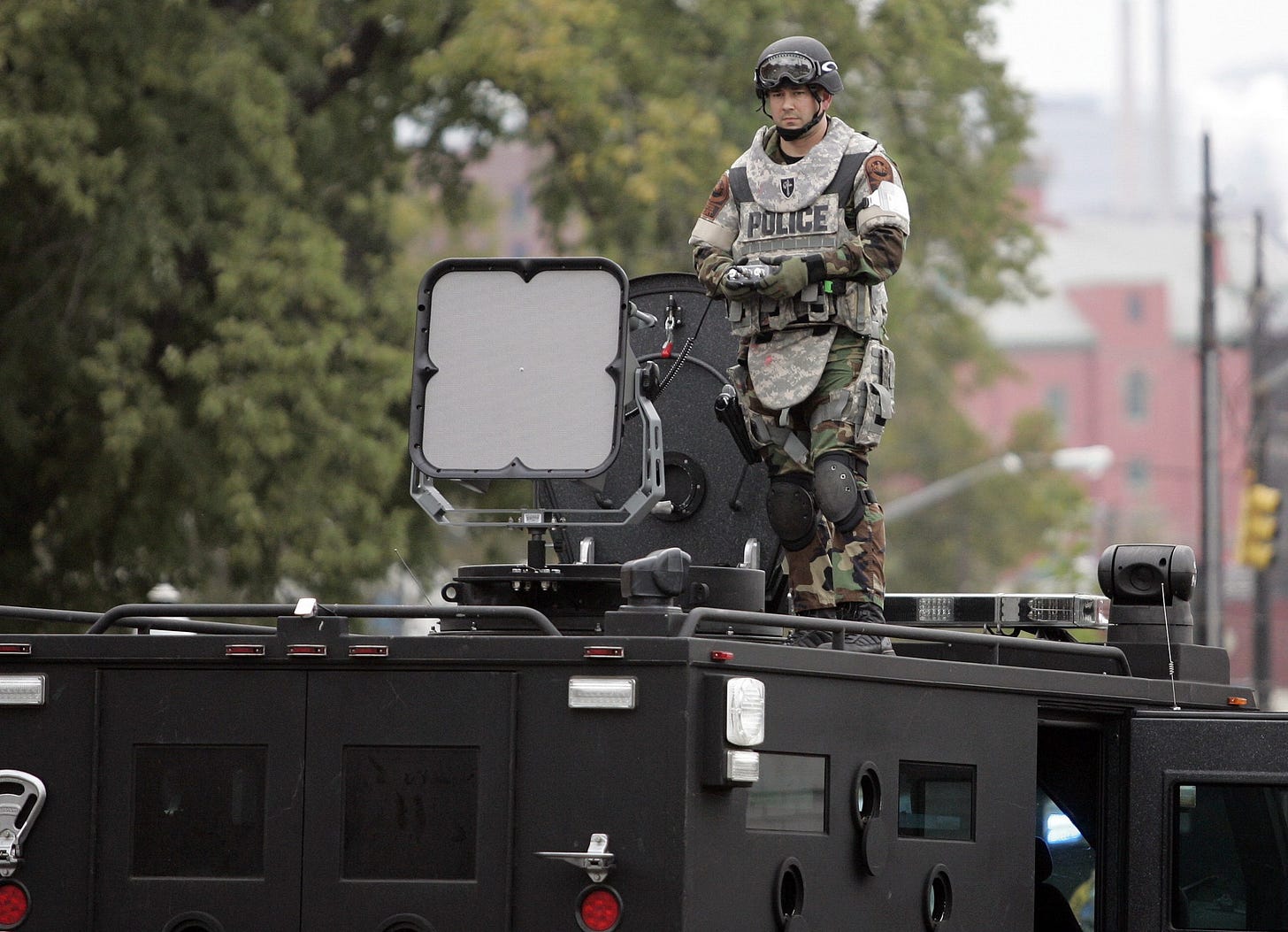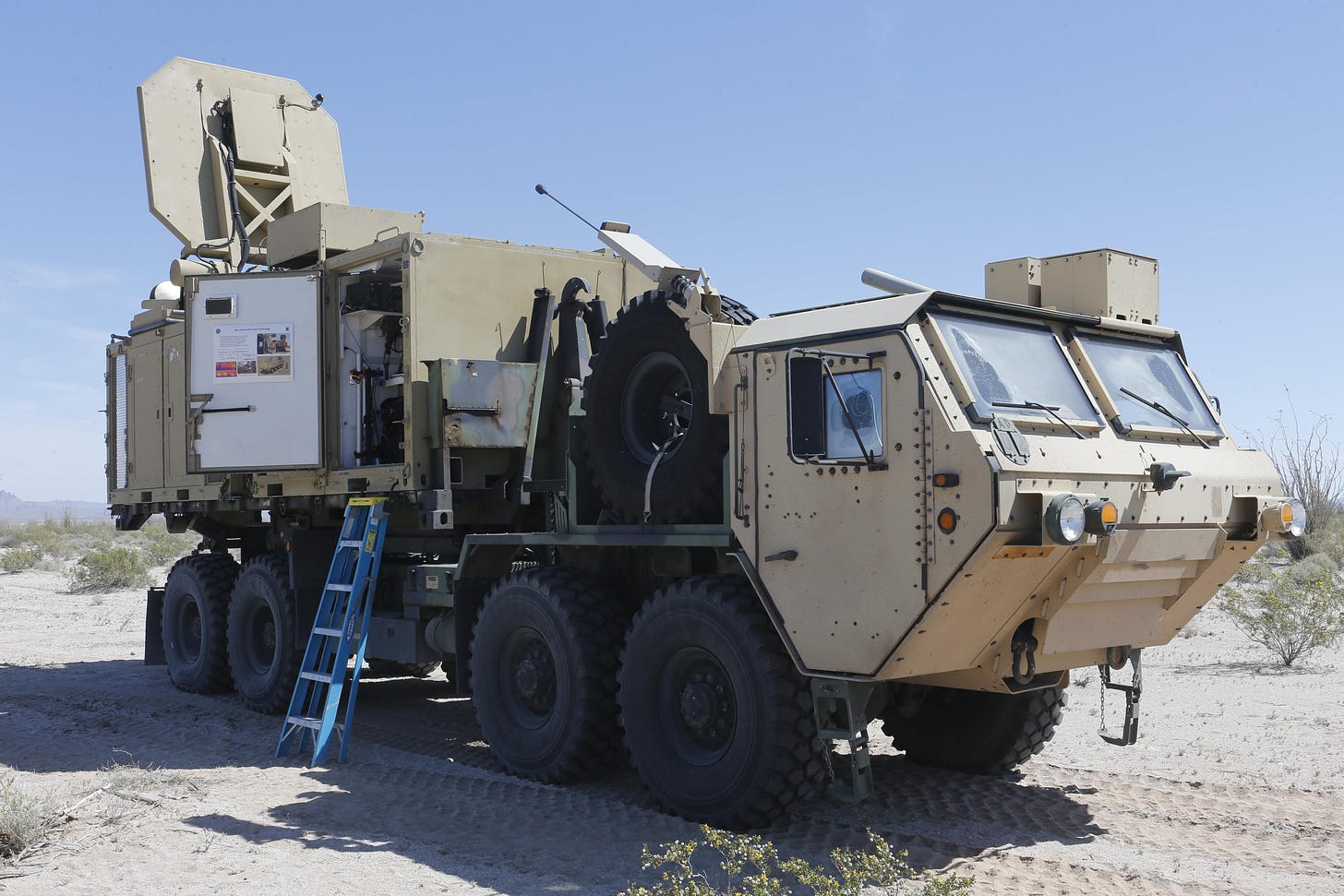BOTTOM LINE UP FRONT (BLUF)
Since 2014, U.S. and allied personnel—primarily diplomats, intelligence officers, and defense personnel—have reported unexplained neurological symptoms, including acute auditory phenomena, vertigo, and cognitive deficits, now termed Anomalous Health Incidents (AHIs). These incidents, spanning over 100 cases globally, correlate with postings involving high-value intelligence targets and geopolitical adversaries. Emerging evidence implicates GRU Unit 29155, a Russian covert operations unit, in deploying directed energy weapons (DEW) – specifically non-lethal pulsed microwave or ultrasound energy – capable of inducing such effects without detection. However, U.S. intelligence and medical authorities have downplayed foreign involvement, likely due to gaps in diagnostic certainty, diplomatic risks, and protecting domestic capabilities.
It is PROBABLE (60–70% confidence, Sherman Kent Scale) that GRU Unit 29155 deployed directed energy weapons (DEWs) to target U.S. personnel, based on geolocation evidence, technical documentation, and victim patterns.
The U.S. intelligence community and medical establishment LIKELY obfuscated findings (75% confidence) to mitigate diplomatic escalation risks, protect classified DEW technology, and conceal intelligence-gathering vulnerabilities. This reflects historical precedents (e.g., Moscow Signal cover-up) and explains NIH study irregularities (coercion allegations).

I. INCIDENT OVERVIEW
Timeline and Geographic Distribution
Initial Documentation: Frankfurt, Germany (2014) - Earlier than previously thought
Primary Cluster: Havana, Cuba (late 2016) - U.S. and Canadian diplomats experienced acute onset of symptoms in residential quarters or embassies
Secondary Clusters: Guangzhou, Vienna, Moscow, Bogotá, Tbilisi, Uzbekistan, Washington D.C., and other locations—often affecting individuals in intelligence, diplomatic, or military assignments
Scope: Between 2016 and 2023, over 1,500 U.S. and allied personnel reported AHIs
Affected Population
Demographic Pattern: Predominantly mid-to-senior level operatives with sensitive access and active intelligence portfolios
High-Value Targets:
CIA/NSA officers/liaisons
State Department intelligence integrators
NATO-affiliated defense attaches
Notably, "Russia hands" (specialists countering Russian aggression), such as CIA officers in Kyiv Station
Entire CIA stations targeted in some cases, including family members
II. SYMPTOMOLOGY & BIOMEDICAL FINDINGS
Common Symptoms
Pressure and sound perception (often directional and acute)
Tinnitus and vertigo
Cognitive impairment ("brain fog"), memory issues
Visual disturbances
Sleep disruption, fatigue, persistent headaches
Medical Evidence - Conflicting Findings
University of Pennsylvania Study (JAMA 2018): Minor but statistically significant differences in white matter tracts, particularly in cerebellum and auditory/vestibular pathways
NIH Studies (2024): No MRI-detectable brain injuries or consistent set of imaging abnormalities differentiating AHIs from controls
41% of AHI group met criteria for functional neurological disorders (FNDs)
Many subjects met criteria for persistent postural-perceptual dizziness (PPPD)
Specific Physical Injuries: Victims diagnosed with Minor's syndrome (rare condition researched only by one Russian military academy linked to GRU)
Physical symptoms include holes in ear bones requiring surgeries (e.g., Joy, spouse of a diplomat in Tbilisi, underwent 2 surgeries and faces a third)
Caveat on Medical Studies
Methodological Issues: Average MRI scans conducted 80 days post-symptom onset, potentially missing acute changes. This 80-day MRI delay likely missed acute-phase biomarkers (e.g., transient cavitation effects), reconciling discrepancies with the 2018 white matter findings.
Functional Neurological Disorders (FND) Critique: Stress that FND/PPPD diagnoses are descriptive, not causative, and fail to explain directional auditory phenomena or GRU-linked Minor’s syndrome.
Allegations of Coercion: Marc Polymeropoulos (former CIA officer) reported: "They wanted us to be a lab rat for a week before we actually got treatment at Walter Reed — and at bare minimum, that is unethical and immoral"
Medical Research Limitations: The kinds of injuries proposed to be caused by special forms of pulsed microwave energy would not be expected necessarily to show up on brain imaging studies. Both microwave and ultrasound energy can damage cells in the brain as well as open the blood-brain barrier, causing proteins from the damaged cells to leak into the spinal fluid and then into the bloodstream. These so-called biomarkers are metabolized by the body within hours to days, meaning that someone hit with an acoustic weapon would need to have their blood drawn almost immediately after an attack to detect this kind of evidence of injury.
III. TECHNICAL PLAUSIBILITY – RF/MICROWAVE MECHANISM
Known Mechanisms
Microwave Auditory Effect (Frey Effect):
Pulsed microwave radiation can induce auditory perception by thermoelastic expansion of brain tissue stimulating cochlear nerves
Directional, requires line-of-sight or near-field targeting
Pulsed RF Directed Energy:
Can interact with nervous tissue and brain electrical activity
Confirmed in controlled lab conditions, though not weaponized at scale in open-source literature
US Patents (Public Domain):
US4877027A: EM auditory induction system
US4858612A: Simulated microwave auditory cortex interface
Devices theoretically feasible for close-range use
Historical Precedents
Moscow Signal (1953–1976):
Continuous low-level microwave beam directed at U.S. Embassy in Moscow
No known acute health effects, but increased cancer rates in embassy personnel were noted post hoc
Reduktor, or “Gearbox.” (1984)
The Radio Technical Measurement Research Institute in Kharkiv, Ukraine, Reduktor’s central task was to study the uses of “electromagnetic radiation to influence the behavior and reactions of biological objects, [including] people.” The institute was subordinated to the Soviet Ministry of General Machine Building, which oversaw the Soviet Union’s space exploration program. “The main goal,” according to one Reduktor document, “was to create a stable mechanism of information influence (i.e., forcing the object to take certain actions by influencing the brain and other organs) using a low-energy effect with a power flux density of no more than 10 microwatts per square centimeter.”
Current Capabilities
DEW in active Deployment
Active Denial System (ADS): Millimeter-wave (94 GHz) crowd-control weapon causing intense skin heating. Deployed by the U.S. military for base protection; tested but not widely fielded.
Long Range Acoustic Device (LRAD) Sonic weapon for crowd control via focused sound beams. Widely used by military/police (e.g., anti-piracy
Countless Anti-Drone Systems: Including Bofors HPM Blackout, Radio Frequency Directed Energy Weapon (RFDEW), Tactical High-Power Microwave Operational Responder (THOR), and Counter-Electronics High-Power Microwave Advanced Missile Project (CHAMP)
Global DEW Development:
DARPA, AFRL, and private defense contractors have acknowledged DEW research:
WARDEN Program (Waveform Agile RF Directed Energy): Enhancing microwave weapon agility, targeting, and neurocognitive disruption capabilities
MEDUSA (Mob Excess Deterrent Using Silent Audio) Non-lethal microwave weapon using the microwave auditory effect (Frey Effect) to induce sound/pressure sensations in the skull. Developed by WaveBand Corp (acquired by Sierra Nevada in 2005) but discontinued by 2008 due to concerns about permanent brain damage.
High-Power Microwave (HPM) systems already deployed for anti-drone/anti-electronics roles
Pulsed, mobile, covert systems are theoretically feasible using commercially miniaturized microwave emitters with phased array directional targeting
China, France, Germany, UK, Russia, India, Israel, and Pakistan are developing military-grade DEWs
Iran and Turkey claim to have them in active service
First reported combat use in Libya (August 2019) by Turkey with ALKA directed-energy weapon

IV. EVIDENCE OF GRU UNIT 29155 INVOLVEMENT
Operative Presence at Incident Sites
Geolocation Data: GRU operatives confirmed via travel logs and cell metadata at locations preceding AHIs:
Tbilisi, Georgia (2021): Albert Averyanov (son of Unit 29155's founding commander) was present during attacks on U.S. personnel
Frankfurt, Germany (2014): Egor Gordienko linked to Unit 29155's sabotage operations, was spotted near the U.S. consulate before an AHI
These incidents occurred 8 years and 1000 miles apart, suggesting consistent operational patterns
Documentary Evidence
Russian Military Documentation:
2017 commendation for Colonel Ivan Terentiev, commander of GRU Unit 29155, for research on "potential capabilities of non-lethal acoustic weapons in combat activities in urban settings"
2019 email chain revealed Terentiev won a competition titled "Finding the Perspectives for Use of Acoustic Weapons in Urban Warfare Scenarios"
Certificate of Delivery-Acceptance from Fund for Advanced Research (FPI, Russia's DARPA equivalent) showing IP transfer for acoustic weapon development
Financial Records
Terentiev received unaccounted funds in 2017 (approximately 100,000 rubles/$1,700) linked to intellectual property transfers for "innovative weapons based on new physical properties"
This transaction occurred during his promotion to a federal inspector position, requiring financial disclosure
Pattern of Targeting
Victims disproportionately included intelligence officers specializing in Russia, Ukraine, and Georgia
Greg Edgreen, former lead Pentagon investigator (2021-2023), noted targeting of top-performing officers with a Russia nexus
Entire CIA stations targeted in some locations, including family members
Political Statements
Nikolai Patrushev (Russian Security Council Secretary) reportedly boasted about disabling hundreds of American/Western operatives over 10 years: “In recent years, hundreds of employees of foreign intelligence services, as well as other persons involved in organizing intelligence and subversive activities against our country and our strategic partners, have been identified and neutralized.”
Putin mentioned the need for directed energy weapons in 2012, noting they are "less politically controversial"
V. INTELLIGENCE COMMUNITY ASSESSMENTS
Official U.S. Positions
CIA Internal Review (2022): Majority of ~1,500 reported AHIs attributed to:
Environmental noise
Preexisting medical conditions
Psychogenic factors
However, dozens of cases remain unexplained, often involving:
Sudden, acute onset
Geolocation correlation to high-value targets
Lack of preexisting conditions
Long-term neurological effects
ODNI Assessment (2023):
No adversary identified "with high confidence"
5/7 agencies assessed "low-to-moderate confidence" in benign causes
2/7 allowed for foreign state actor possibility with "low confidence"
Updated Intelligence Assessment (January 2025):
Two U.S. intelligence agencies, including the National Security Agency, concluded it is possible that a small number of cases may have been caused by a "novel weapon" wielded by a foreign actor
Broader IC view maintains that it's "very unlikely" a foreign power is responsible
Expert Opinions
National Academies of Sciences (2020): "Directed, pulsed radio frequency energy" is the most plausible mechanism explaining the symptoms
Dr. James Giordano (Georgetown University): Proposed that directed energy weapons could cause injuries through "cavitation" - formation of air bubbles in fluids near the inner ear that can travel through the cochlear and vestibular aqueducts into the brain
Greg Edgreen (Former Pentagon Investigator): Believes the Kremlin is responsible, noting targeting of top-performing officers with a Russia nexus
Congressional Oversight
House Intelligence Committee (December 2024): Concluded that the 2023 intelligence assessment "lacked analytic integrity and was highly irregular in its formulation" and accused the intelligence community of impeding their investigation
Committee suggested that foreign involvement, particularly by Russia, is "increasingly likely"
VI. STRATEGIC CONSIDERATIONS FOR OBFUSCATION
U.S. Motives for Downplaying Foreign Involvement
Diplomatic Escalation Risks:
Attributing AHIs to Russia would force a response under Article 5 of NATO or the UN Charter
Could escalate from proxy war to direct confrontation
Undermines deterrence by exposing inability to counter advanced asymmetric threats
Protection of Classified Technology:
Acknowledging foreign DEW capabilities could force premature disclosure of U.S. countermeasures
DARPA/AFRL programs remain classified but operate in similar domains
Russian Tradecraft Considerations
Plausible Deniability: DEW attacks leave no physical trace, no visible emission, no sound
Low-Lethality/High-Impact: Disrupts operational readiness and morale without fatalities
Psychological/Neurological Focus: Forces reassignment, undermines missions
Kremlin Response: Dismissed reports as "nothing more than baseless, unfounded accusations by the media"
VII. CONFIDENCE ASSESSMENTS (SHERMAN KENT SCALE)
FINAL ASSESSMENT
The evidence strongly suggests that GRU Unit 29155 has deployed directed energy weapons against U.S. personnel in multiple locations since 2014. The absence of conclusive evidence reflects adversarial tradecraft and institutional biases in U.S. reporting, not the absence of a threat. Both U.S. and Russian government statements should be viewed with skepticism given competing geopolitical interests: the U.S. to avoid escalation and Russia to deny involvement in what would constitute a casus belli. While not automatically triggering NATO Article 5 (reserved for armed attacks), nevertheless evidence of direct confrontation leading to avoidable diplomatic incident. As Lt. Col. Greg Edgreen warned, "Putin would have every interest in neutralizing scores of U.S. intelligence officers." The targeting pattern, technical feasibility, and documentary evidence of Russian research into precisely such weapons creates a compelling case for continued investigation and protective countermeasures.
Appendix A.
Complete Timeline
Frankfurt, Germany (2014): A U.S. government employee at the consulate reportedly experienced an attack involving a “strong energy beam,” leading to unconsciousness. This is considered the earliest known case of Havana Syndrome.
Havana, Cuba (2016–2017): Multiple U.S. diplomats reported symptoms such as dizziness, headaches, and difficulty concentrating. These incidents led to the coining of the term “Havana Syndrome.”
Moscow, Russia (December 2017): Marc Polymeropoulos, a senior CIA officer, experienced severe symptoms during an official visit, which eventually led to his early retirement.
Washington, D.C., USA (November 2020): A senior official in the Trump-era National Security Council experienced sudden neurological symptoms near the Eisenhower Executive Office Building.
Tashkent, Uzbekistan (December 2020): A CIA officer and his family were affected by an incident in their apartment, necessitating medical evacuation.
Tbilisi, Georgia (October 2021): “Joy,” the wife of a U.S. Embassy official, experienced acute symptoms after hearing a piercing sound in her home. She later identified a man she saw at the time as Albert Averyanov, linked to GRU Unit 29155.
Hanoi, Vietnam (August 2021): A CIA officer assigned as the incoming chief of station experienced symptoms while staying at a hotel, leading to medical evacuation.
London, UK (October 2021): The wife of a CIA officer, previously stationed in Kyiv, experienced symptoms in a café.
End of Brief.
[For more information on Section 14 please click here.]









